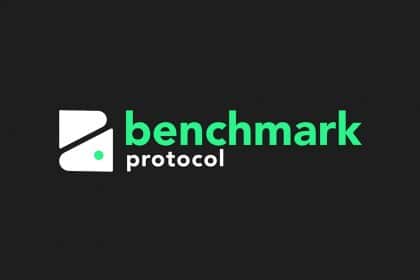Built on the Ethereum Blockchain, the Benchmark Protocol aims to change the weak points of the DeFi space and connect traditional finance with the cryptocurrency market.
The Inventor of the Benchmark DeFi project, a top Citibank executive, defines it as a “Supply Elastic Collateral and Hedging Device”. Accordingly, the protocol is designed to run on the VIX Volatility Index, with its token called MARK, pegged to the Special Drawing Rights (SDR).Introduced as a Fair Launch, the Benchmark launchpad attracted several investors in the first weeks with word of mouth instead of Initial Exchange Offerings or Initial Coin Offerings, which usually fail in the long run. The Benchmark protocol reached a total of $34 million in just the first three weeks. After successfully culminating the Fair Launch, Benchmark transitioned their rewards structure from the Launchpad to The Press, where Liquidity Providers can earn 60-100% APY.Connecting Traditional Finance to Crypto MarketsOne essential point of the Benchmark Protocol is reducing inflation inherent in traditional fiats and expanding the exposure of the DeFi space to global markets. To achieve this, the MARK token supply relies on the deviations from the target Peg and the VIX data.Unlike other stable-coins which are only based around the US dollar, Volatility Index data and the SDR can bring value to the DeFi space. The VIX provides investors with a better window of opportunities to trade the future direction of the expected volatility of the S&P 500 Index. Likewise, by relying on the SDR, the inflation adjustment doesn’t adhere to just one currency, but five, providing more exposure, stability and consistency.The Special Drawing Rights is a unit of account created by the International Monetary Fund (IMF) and it’s a composite of several fiats: the US Dollar, the Pound Sterling, the Japanese Yen, and the Yuan. The IMF uses the SDR as an international reserve currency.As a result, MARK becomes the first adaptive token that can potentially amplify the functionalities of the DeFi space. Being an ERC-20 token, the MARK provides inherent utility value. Most important, supply rebalances are quick and predictive, reacting to the Volatility Index. Benchmark Protocol executed its first supply adjustment on December 28th, 2020. Rebalances occur on New York Stock Exchange trading days within a 5-hour window after the settlement of CBOE VIX contracts.Elastos Community Exploring the Benchmark ProtocolThe Benchmark Protocol is offering opportunities for several investors and financial institutions since its launchpad. Elastos, a platform for Decentralized Applications – dApps – is currently exploring Benchmark protocol to enhance payment methods and other areas in the DeFi ecosystem.According to the report, the Elastos community believes that adaptive tokens could enhance peer-to-peer – P2P – finance and payment methods. The firm is looking to address several problems within the DeFi ecosystem, like the disadvantages of collateral-backed stable-coins and the need for cross-chain adaptive supply tokens.Additional strategic partnerships include collaboration within the bZx ecosystem, plans on utilizing RenVM to ensure the protocol can excel in a cross-chain environment, and the start of integration into the Solana network.Problems with Collateral-back StablecoinsThe stablecoin scheme is highly centralized. The need for third parties, such as suppliers, custodians, and the project shows this centralization. Besides, audit processes are expensive and time-consuming, due to how intricate the operating system can be.Stablecoins also carry the risk of liquidations if the collateralized asset loses value, a fundamental problem with over-collateralized stablecoins.There’s always the risk of governments launching their stablecoins, hence, making worthless the original concepts of privacy and the P2P economy. One example is China’s first digital sovereign currency: the Digital Currency Electronic Payment (DCEP), with ATMs all over the country.Regulations from governments are another issue, as standard stable-coins face more pressure from the US government every day. Such is the case with Tether and the Stable Act – a bill that seeks banking licenses for these currencies.








